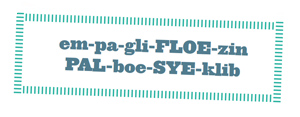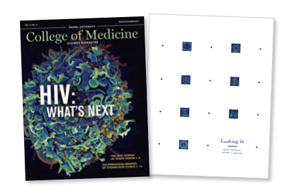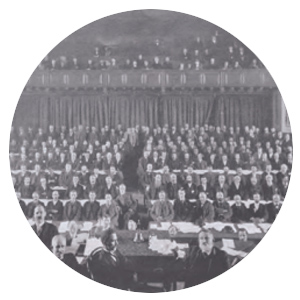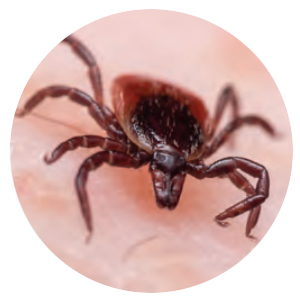Short Report - What's News?

Ria Mulherkar found herself feeling guilty whenever she took time from studying for the USMLE Step 1, wishing she had a way to keep reviewing while making food or doing laundry. So she did something about it for the next crop of first- and second-year students. She created Spoonful of Sugar, a podcast to help the medicine go down.
“Third- and fourth-year medical students provided the most efficient and useful advice to me as I was preparing for Step 1,” says Mulherkar, now a fourth-year herself. She and her classmates provide their assistance through the podcast. Each episode tackles a single topic, including, for example, eye anatomy, myocardial infarction, pulmonary embolism and shock.
They are Q&A-style conversations: The speaker asks a question, pauses to give the listener time to think about the answer, and then proceeds with the response. Says Mulherkar, “When you tune in to our podcast, it doesn’t matter if you get every answer right or get every answer wrong. When you listen, engage and understand, the learning will happen on its own.”
Have a taste at spoonfulofsugarorg.wordpress.com.
Back to Top
“The Decade in Healthcare: 12 Milestones We Won’t Forget” is an “ambitious yet humble” compilation by the editorial team at Becker’s Hospital Review. Among other notable developments, such as the Affordable Care Act and the opioid epidemic, the article mentions the expanding array of C-suite roles in health systems. To CEO, CFO and COO, Becker’s adds ten newer titles that have become more common, including chief experience officer (that’s CXO), chief innovation officer, chief strategy officer and chief wellness officer.
Back to Top

Out of nothing more than curiosity, an LA Times reporter set about figuring out where drug names come from — and not those shiny, sleek names that are clearly the work of marketing firms. He was curious about the often-unpronounceable names of their generic equivalents, citing examples like adalimumab, rovaroxaban, empagliflozin and palbociclib.
What he discovered was quite a surprise: The names are created by two women in Chicago, Stephanie Shubat and Gail Karet. Shubat, director of the United States Adopted Names program (part of the American Medical Association), and her colleague Karet make recommendations that are sent to the USAN Council, and the council approves or rejects the name. Shubat and Karet name about 200 drugs a year. They consider a multitude of factors, among them similarity between brand name and generic (names too close to each other will lend favor to the brand name when generics are available); offensiveness in any language; and letters with meaningfully different pronunciations in other languages (meaning no W, K, H, J or Y in the name).
The pair work with consistent “stems” within a single drug class. Certain anti-anxiety medications all contain azepam, and cortisone-derived drugs have cort in their names, for example. This still leaves Shubat and Karet with the daunting task of coming up with new prefixes that don’t sound too much like other drugs. Since USAN and other organizations have named about 11,000 generic drugs in the last 50 years, Shubat admits she even turns to license plates for prefix ideas.
Back to Top

An interactive exhibition, “Seat at the Table” celebrates the 19th Amendment, guaranteeing women the right to vote, while asking — 100 years later — “Where are we now?” The installation in the lobby of the Kimmel Center is free and open to the public daily through November 4.
The exhibition connects historical stories to contemporary issues, with the goal of raising awareness around women’s suffrage and its ties to current social movements. The creators also hope it will inspire the next generation of civic engagement working toward gender equality.
The stark statistics of inequality are displayed in novel ways throughout the space. Huge infographics, which also function as furniture, show the disparities in diversity and leadership across multiple industries. Visitors are invited to take a seat at a board table, step up to a presidential podium, or ride a bike to “exercise your right to vote,” while contemplating these disparities and imagining a different scenario. A wall of touch screens introduces 18 pioneering women who represent an array of arenas — activism, politics, business, STEM, communications and sports.
Commissioned by Vision 2020 as part of its Women 100 program, “Seat at the Table” was conceived and designed by DOME Collective, an experience design studio in New York City, and curated by Talbott Exhibits and Planning of Philadelphia. Both firms are women-owned. Visit women100.org/events/seat-at-the-table-exhibition/.
Back to Top

A partnership between Drexel University and the University of Bologna known as DUniBo has launched an Italian exchange program for graduate students. Julia Farnan and Anthony DiNatale, doctoral students in the Department of Pharmacology & Physiology, were the first Drexel “ambassadors” to be hosted by the University of Bologna. They spent five weeks in Italy, learning about their counterparts’ research. By the time they returned, Claudia Albertini and Ottavia Tartagni, two University of Bologna PhD students, were at Drexel on a similar getting-to-know-you mission.
DUniBo is led by Olimpia Meucci, MD, PhD, professor and chair of pharmacology and physiology at the College of Medicine, and Renato Brandimarti, PhD, assistant professor of pharmacy and biotechnology at the University of Bologna. In 2017, Meucci received a senior fellowship position in Bologna, and spent time gaining first-hand experience with the institution. Her collaboration with Brandimarti dates to 2002, when he visited Meucci’s lab at Drexel.
The two institutions signed a memorandum of understanding in 2018, and just a year later, the Drexel students were on the ground in Bologna. In their time there, they met with faculty, PIs and students, and took enough notes to create a database so Drexel researchers and students can search for potential scientific collaborations.
The exchange program is called “The Outlooking Scientist,” Meucci notes, because one of the major goals is to push students to look outside their own areas of research and look for more opportunities for interdisciplinary interactions. “We are still really at the beginning, and so far we are doing well,” Meucci says. She has big ambitions for developing the program to include other disciplines and other institutions, all with the goal of broadening world views to make better scientists and stronger collaborations.
Back to Top

The College of Medicine has been looking good lately, and others have noticed! Looking In: A Window Into Our Culture received a 2019 Philadelphia Design Award for excellence in graphic design from the American Institute for Graphic Arts. The book is a glimpse into seven exceptional attributes of the College of Medicine. If you would like to receive a copy, email erl55@drexel.edu.
In addition, the Spring/Summer 2019 issue of the Drexel University College of Medicine Alumni Magazine won an award for publication design from Graphic Design USA. It’s our favorite cover!
Back to Top

In 2019, NIH Director Francis S. Collins, MD, PhD, penned an open letter to the biomedical research community declaring his unwillingness to speak on panels where women and other people underrepresented in science have not been invited. He states that “it is time to end the tradition in science of all-male speaking panels, sometimes wryly referred to as ‘manels.’” His statement came on the heels of a report from the National Academy of Sciences, Engineering and Medicine, “Sexual Harassment of Women: Climate, Culture, and Consequences in Academic Science, Engineering, and Medicine.” The report links limited advancement opportunities for women and underrepresented minorities to a culture that tolerates harassment.
Back to Top

The heart is one of the most difficult parts of the body to observe. Standard imaging technology, such as ultrasound, echocardiography and computed tomography produce sound and video that is so distorted, doctors are essentially listening to echoes and studying shadows. As a result, cardiovascular disease is only accurately diagnosed about 70 percent of the time.
“Most of the technologies we have are good at looking at the big vessels on the outside of the heart. But really, they don’t have the ability to see blood flow through the little vessels,” says cardiologist Brett Angel, MD, a faculty member who trained in Drexel/Hahnemann programs.
Angel is part of a group that is developing a heart-activated contrast dye. The team includes Steven Wrenn, PhD, a professor in Drexel’s College of Engineering, who designed the imaging dye Electrast. Wrenn’s design encapsulates a droplet of perfluorocarbon — an inert chemical commonly used in enhanced ultrasound imaging — inside a lipid molecule. Because lipids are smaller than blood cells, these capsules can move freely in the bloodstream without triggering an immune reaction. Once they encounter the electric field of the heart, the lipids begin to release the perfluorocarbon tracer. As ultrasound is applied, the sound waves are deflected by the tracer droplets but pass through the soft tissues of the heart, thus creating the contrast that enables an image to form. This means it can provide a very specific and detailed image of blood flow within the heart.
“Electrast can be injected into any vein, and it will not activate until it reaches the heart. Other tracer agents must be introduced directly to an artery via a catheter tube, because they will begin reacting immediately, and in the case of the tracers used in CT and PET imaging, the tracer is a radioactive chemical. So, doctors are hesitant to perform those tests, especially on patients who might not be healthy enough to handle the physical stress of it,” says Angel.
Trials thus far are showing no adverse effects of exposure to Electrast. With funding from the Drexel-Coulter Translational Research Partnership program, the team continues testing in order to optimize the design of the lipid and tracer droplet configuration.
“If we could use this as a diagnostic tool to see if there are partial blockages, or a lack of blood flow that could lead to a heart attack, we would be able to catch it early enough to act on it before any damage is done. That’s really the holy grail of cardiology,” Angel says.
Back to Top

The Center for Advanced Microbial Processing at the College of Medicine is studying ticks and the diseases they carry via species-specific microbiome analysis. Researchers will use the data to make a comprehensive map of which microbes are carried by the different ticks in different parts of the United States. This will allow physicians to tailor testing for tick-borne illnesses in their communities.
The center has restarted its tick collection campaign, which began in 2017. Specimens are needed from “civilian scientists” (or scientists) from throughout the United States. You can help! If you find a tick on yourself, a friend or an animal companion, please save it and send it to the center. Instructions, including a simple submission form, are available at drexel.edu/medicine/ticks.
Back to Top

Last summer, a behavioral scientist discovered that a paper he submitted to a journal had been rejected for plagiarism — a decision he believed was made by a bot. Jean-François Bonnefon turned to Twitter to express his dismay, noting that the “plagiarized” portions included the author affiliations, methods and references. The Scientist reported the story on June 25, noting that a lengthy Twitter thread followed, including numerous other researchers complaining of the same issue. Bonnefon and others urged journal editors to allow humans to continue to make the final decision regarding plagiarism.
Journal editors spoke up, some noting that their process always involved a human element, despite the increasing popularity of AI text-duplication checkers, as well as automated systems used to review statistical analysis and other aspects of submitted papers, in an attempt to relieve some of the burden on overtaxed peer reviewers. The issue highlights the limitations of artificial intelligence, though, and adds to the larger issue of retracted works (Spring/Summer 2019) and the replication crisis, which particularly affects social science and medical research.
Speaking of retraction, be sure to see the letter on page 2 concerning postretraction citations.
Back to Top